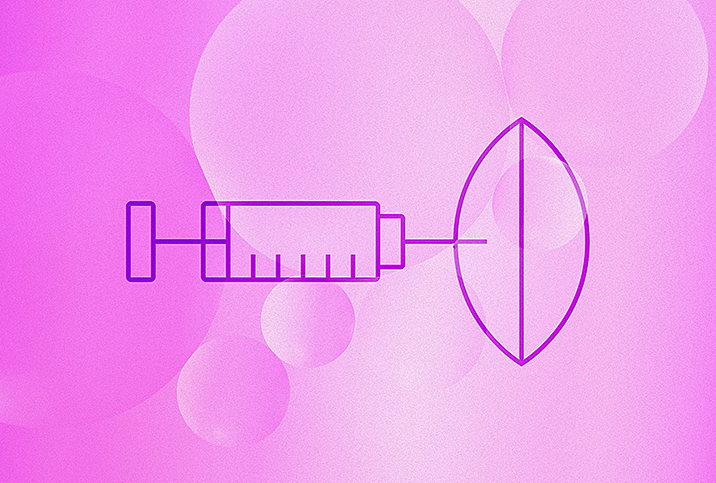I wanted a quick fix. In one day, after just one procedure, I was told this could all be over. The vagina Botox was sold to me by my doctor as a minor outpatient procedure that would lead to a completely pain-free sex life. A solution for vaginismus. Sign me up.
For the uninitiated, vaginismus describes the tightening of the muscles along the vaginal wall, which can quickly and greatly impact penetrative sex. When anything comes in proximity to the vagina, its muscles involuntarily contract and voila: closed for business.
The condition is estimated to affect as many as 1 in 6 women. But genital Botox injections directly into those muscles can slightly freeze them for around six months, meaning they can't perform this contraction. During these months, the patient implements dilators (tube-shaped devices that range from small to large) into the vagina, and eventually, the body and brain learn that penetration is possible. Dilators are inserted for approximately 10 minutes a day to train and relax the pelvic floor muscles. By the time the vaginal Botox wears off, the body should be prepped for intercourse.
My vagina Botox experience
After grappling with vaginismus for about 10 years, having discovered the issue during my first attempt at inserting a tampon, I felt grateful for the privilege of being able to scrape together more than £2,000 for the procedure. Despite the injections, my experience was pretty comforting: I was put under anesthetic, didn't feel a thing and it was all over in an hour or so.
During a follow-up appointment two weeks after the procedure, the doctor told me to bring my dilators along—the point of the appointment was to find out whether the Botox had really worked. I laid down and the doctor proceeded to insert dilator No.1—the smallest—into my vagina. Before this, I hadn't been able to fit even a finger up there. I was in shock. Next, he inserted the second dilator, then the third. Although I wasn't in any pain, it's fair to say I was panicking. A lot. I was overwhelmed by my brain and my body operating in sync, to the point where after he'd finished with the third dilator, I stood up and almost passed out. I came out of the appointment and sobbed, overcome with emotion.
Vagina Botox wasn't the fast solution I had hoped for
So what's the catch? Don't get me wrong, even two years down the line, I can still use my dilators, but the post-vaginal Botox romp hasn't been what I expected.
While vaginismus is a physical response, it is also psychological. After my first experience with PIV (penis-in-vagina) sex, I realized the weight of my vaginismus on my mental health. It was a sudden transition into penetration. Yes, my body could now accomplish the act that I had been waiting and wishing for, but I was still severely anxious about sex. But my brain wasn't catching up to my physical actions. It wasn't there yet, and it felt like a huge ordeal.
The procedure should be offered alongside cognitive therapy to offer guidance for the psychological side of vaginismus.
There are plenty of techniques to deal with anxiety and stress, including mindfulness, meditation, breathing and relaxation exercises, explained Dr. Wafaa Eltantawy, a psychosexual and relationship therapist in the United Kingdom. "Physical, medical and psychological therapy all work concurrently in treating vaginismus patients," she said. If only one of these treatments is used, recovery can sometimes be challenging.
I'm still processing the vagina Botox procedure and outcome
Post-procedure, I've been able to insert some of the largest dilators and have even managed PIV sex a few times. Although I willingly bought into the vagina Botox process, I wish the situation had been handled differently. I wish I'd been prepared for the fact that my body would be "fixed," but my brain would very much be lagging behind. Vagina botox has given me this incredible leap in my journey: the ability to insert dilators and experiment with sex. But I feel strongly that the procedure should be offered alongside cognitive therapy to offer guidance for the psychological side of vaginismus.
In addition to vaginal Botox, Eltantawy suggested that a "holistic, integrative approach addressing both the physical and emotional effects of vaginismus on women, their partners and relationships, is needed to help them rebuild a new, more positive sexual relationship."
Would I recommend vagina Botox to anyone struggling with vaginismus? My answer is a resounding "Yes." It has done wonders for my body's physical capabilities. But I'd recommend it only—and I really mean only—if the patient understands that this isn't a one-stop, cure-all solution.















